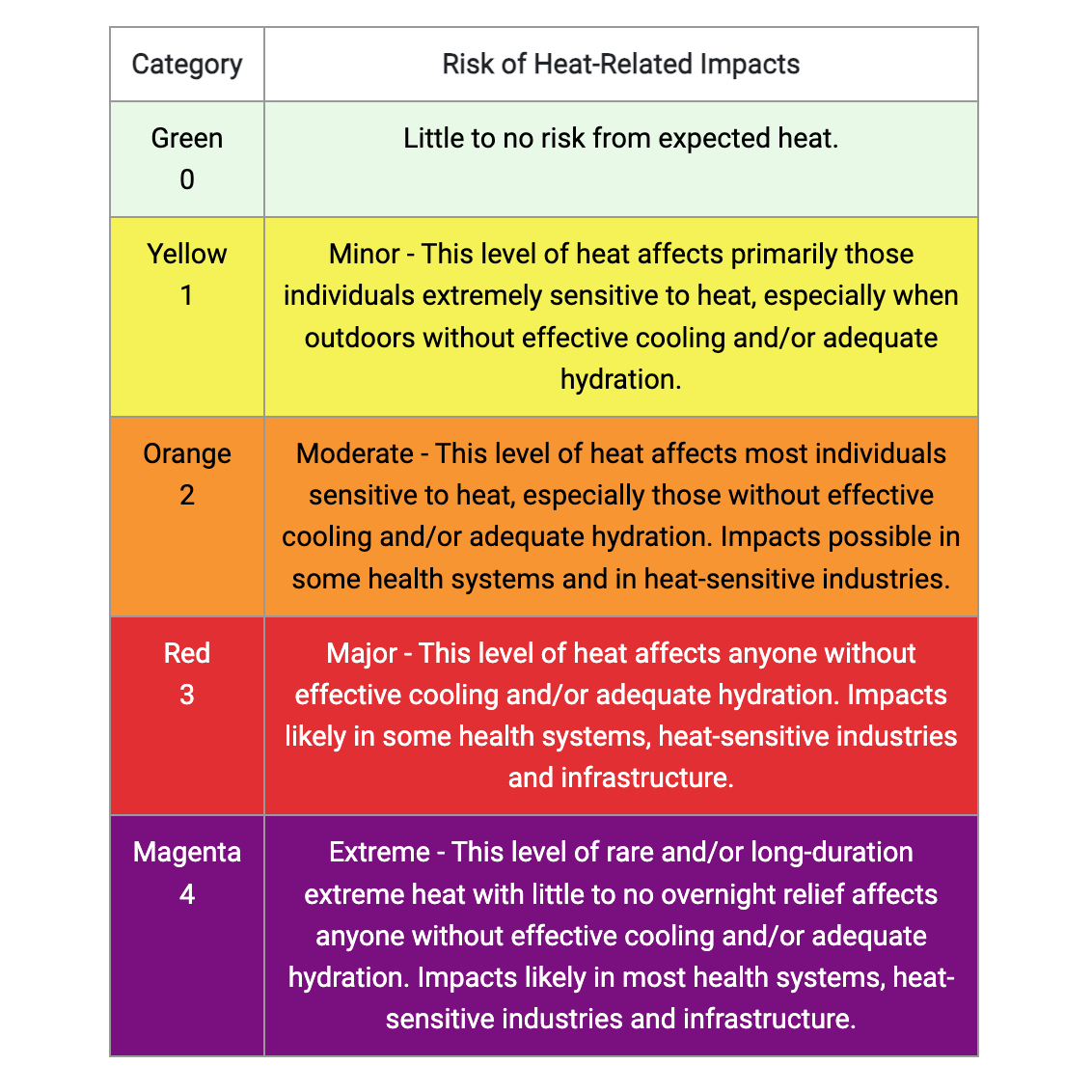Code Red Gets Overtaken By A New, More Dangerous Climate Change Color
By Mikelle Leow, 29 Apr 2024

Image generated on AI
Feeling red-hot this summer would be terrible, but it won’t be the worst thing that could happen. The National Weather Service (NWS) and the Centers for Disease Control and Prevention (CDC) are raising the heat advisory game with a brand-new color code system, unveiled on Earth Day.
Previously, the heat risk scale relied on a spectrum of greens, yellows, oranges, and reds. However, with a warming climate leading to longer-lasting and more intense heat waves, the need for a more nuanced system arose.
Green signifies no heat risk, allowing you to enjoy the outdoors safely. Yellow and orange indicate caution for those sensitive to heat, emphasizing the importance of staying hydrated and cool. Meanwhile, red signals a high risk for everyone, prompting precautions like staying indoors during peak heat hours.
But magenta, malevolent, malicious magenta, represents a very high risk for everyone over an extended period, with little nighttime relief. This level signifies extreme danger.

Screenshot via National Weather Service
“Heat is a threat to our health,” explains CDC director Dr Mandy Cohen, who adds that more than 120,000 people in the US were rushed into emergency rooms last year due to heatwaves.
Magenta signifies a scenario of “rare and/or long-duration extreme heat with little to no overnight relief,” according to the NWS. This level indicates a significant risk of heatstroke and other heat-related illnesses for everyone, regardless of age or health conditions. It’s a critical step above red, which signifies a high risk for everyone but might allow for some nighttime recovery.
Unlike hurricanes with a universal scale, the heat risk system considers local factors to create a more precise warning system. These include local weather data (real-time temperature, humidity, and dew point information), local climatology (historical weather patterns to understand what's "normal" heat for a specific location and time of year), and localized health data (information on heat-related illnesses and deaths in a specific area to pinpoint vulnerable populations). The approach ensures the heat risk warnings are tailored to the specific dangers faced by each community. For instance, a red alert in a desert climate like Arizona might translate to a yellow alert in a more humid region.
The introduction of the magenta heat risk category serves as a stark reminder of the growing dangers posed by climate change. Heat waves are becoming more frequent and severe, with potentially life-threatening consequences. The NWS and CDC emphasize the importance of staying informed about heat risks and taking appropriate precautions, such as staying hydrated and avoiding strenuous activity during peak heat hours.
[via Boing Boing, Associated Press, Fast Company, The Washington Post, images via various sources]





